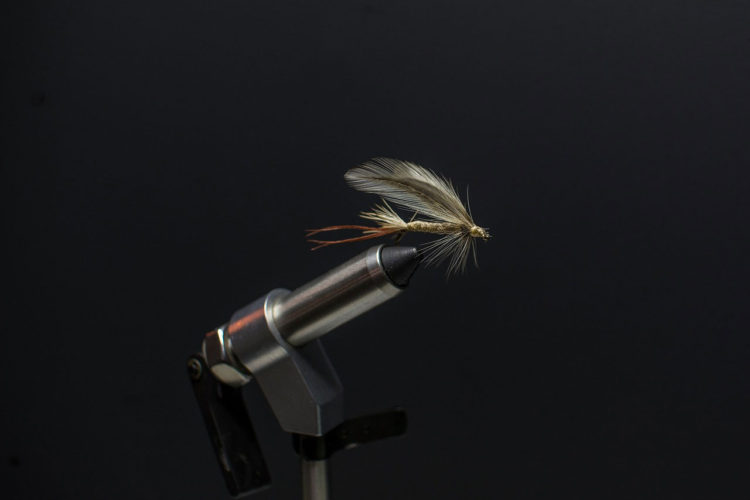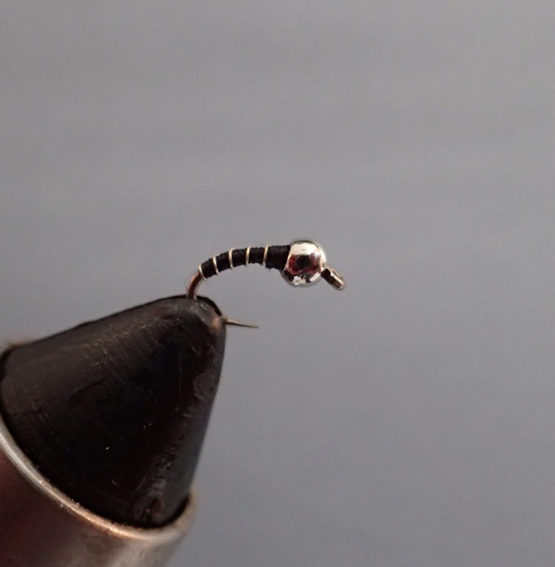Let’s be honest, you can tie the most beautiful fly ever, but if it doesn’t hold up for more than a few casts, what’s the point? That’s where head cement comes in. A little dab on the front threads of a newly tied fly can be the difference between a fly that withstands the fight of one fish, and a fly that holds up to the abuse of ten fish. But the high price of head cement often sends fly tiers on a search for a cheaper, just-as-sturdy alternative. And this search almost always leads them to super glue.
So, what’s the difference between head cement and super glue? Head cement is easy to apply and resists wicking, which makes it great for flies with hackle or dubbing. Though, it lacks rigidity, which can affect the longevity of a fly. Super glue, however, is cheaper and sturdier, but tends to wick into dubbing and hackle, which can affect a fly’s presentation.
I have personally used — and continue to use — both head cement and super glue when tying flies. And while I would like to give you a definitive answer on which is better, the truth is: it depends on the situation. Sometimes I swear by super glue, and won’t even think to use head cement. Other times, super glue can risk the liveliness of a fly, and therefore, I won’t even take it out of my head cement drawer.
The best I can do is provide you with some knowledge of both options. And that’s exactly what we’ll cover in the rest of this article.
Related Content:
- Fly Tying For Beginners (The Ultimate Guide)
- Can You Fly Fish Anywhere?
- 11 Tips For Night Fishing The Taylor River
- 9 Things To Learn About Fly Fishing
- What is A Biot? Tying Flies With Goose And Turkey Biots
- San Juan Worm: Fly Pattern Profile
Head Cement Vs. Super Glue
So, we briefly touched on a couple pros and cons of both super glue and head cement in the intro above, but you’re probably thinking there’s a little more to it. And you would be right. I mean, what are some situations that call for super glue? When should I opt for head cement?
In this section, I want to dive a little deeper into the benefits and disadvantages of both. Let’s start with head cement.
When To Use Head Cement
As I mentioned earlier, head cement is easy to apply. Which makes it a perfect choice when tying small flies, flies with hackle, or flies with a dubbing body. Additionally, I try to avoid super glue with any soft, feathery flies. A good head cement will protect your thread, without wicking into unintended materials on the rest of your fly.
Additionally — with very few exceptions — I never use super glue on dry flies. Why? Because they tend to have a lot of dubbing, feathers, and lightweight materials that are intended to make the fly look “lively” on the surface of the water.
I mean, nothing will wreck a fly presentation like a bunch of stiff hackle. Real flies have legs that move, and wings that flap. If a fish looks at a fly that’s stiff as a board, the likelihood of it choosing your imitation over the real thing is low. So, I recommend avoiding it with dry flies.
Applying Head Cement To Flies
If you’re tying large flies, or flies with bead heads, you don’t need to be super accurate with your head cement. Just slap it on there, avoiding anything soft and feathery. Though, if you’re tying small flies, I recommend applying head cement with a toothpick, or bodkin. Especially if you’re using a water-based head cement, or head cement that you have thinned-out with acetone.
This will ensure accurate application, and keep your flies looking top-notch.
When To Use Super Glue Instead Of Head Cement
As awesome as head cement can be to use, it is expensive, and can be a little lack-luster in the protection of your flies. This is especially true when nymphing. And the faster the current, the more I recommend using super glue.
For instance, if I’m tying a fly for a river with sharp rocks, big (toothy) fish, or just want to make sure my fly lasts a long time, I will use super glue in place of head cement. It just holds up better. In fact, using super glue, I have had flies last longer than the hook itself.
Seriously, on multiple occasions, I have had a hook break off of a fly before the thread unraveled. If that’s the kind of longevity you want from a fly than super glue is your best bet.
Unlike head cement, super glue is really cheap. And, you don’t have to go to a fly shop to get it. I typically just run to Home Depot. Just be sure to get thin viscosity super glue. Medium and thick viscosity super glue don’t really work for fly tying.
Applying Super Glue To Flies
Thin super glue is about the same viscosity as water, so under no circumstances should you just pour it on a fly. Not only will it wreck your fly, but it will probably drip down onto the base of your vise, or your tying table, and become a permanent addition.
You need to be extra careful when applying super glue to a newly tied fly. Let me repeat, extra careful. Here’s what I recommend.
First, place a drop of super glue on a piece of wax paper, and grab a toothpick to use as an applicator.
Then, dip the toothpick in the drop of super glue, and carefully apply it to the threads of your fly. It will absorb very quickly, so be sure to avoid touching anything else. Also, do not use your bodkin. Super glue will build up on the tip of it, and the only good way to remove it is by burning it off with a lighter. And that is a smell you don’t want to experience.
Last, let your fly sit in the vise for a minute, or, carefully stick the point of the hook into a styrofoam cup while it’s still in the vise, and then loosen the jaws. That way, the super glue can dry without you ever having to touch it.
Fly Tying Tip For Applying Head Cement And Super Glue
One of the most frustrating things you will experience as a fly fisher, is when you try to feed your line through the eye of a hook that’s blocked by dry head cement. In fact, there are certain fly shops that I won’t ever buy flies from again, because their flies always have this problem. Moreover, as a fly tier this is even more frustrating, because I know it takes about a half a second to clear the head cement from the eye of a hook. Aaarrgghh, the laziness!
So, in an effort to make the world of fly fishing a better place (one hook eye at a time), here is a quick tip to eliminate this problem forever.
Right after you apply head cement — and while the fly is still firmly held in your vise — pull slightly down on the eye of the hook, and then, let your finger slide off the edge. This will cause the fly to flick off any excess head cement, and it will clear out the eye of the hook.
This technique is extremely effective. In fact, I have never had head cement in the eye of a hook I tied. It works that well.
Oh, but if you used super glue instead of head cement, be sure to hold a piece of paper over the fly as it flicks off the excess. You don’t really want little drops of super glue flying all over your tying table.
Final Thoughts
Super glue and head cement are both viable options when it comes to protecting and reinforcing the threads on a fly. Though, they each come with pros and cons.
If you spend most of your time tying dry flies, or small feathery streamers, a bottle of head cement is probably your best bet. But, if you spend your time nymphing, and want to make sure your flies last as long as possible, super glue might be a great fit for you.
Remember, every fly tier is different. So, ultimately you should just try both, and test them out on the water. If nothing else, it’s just another reason to go fly fishing.
Do you prefer super glue or head cement? We would love to hear your thoughts in the comments below!











Just looking for information on tying flies. I’m just starting out.
Hi David,
Thanks for the comment! If you’re looking for more information on tying flies, be sure to check out our post on fly tying for beginners. If you’re new to fly tying, I think you will find it helpful!
Apply head cement to your thread before tying a whip finish. It’s easy, neat, and you get it where you need it. The whip finish won’t come apart.
This is one of my new favorite tips! Thanks Bruce!
Thanks for the tips. I don’t tie many flies anymore and my cement always dries out. I started using my wife’s hard as nails hardener and it seems to work great and it doesn’t dry out. Been using it for 5 or 6 years and fly’s haven’t come apart yet.
I don’t tie many flies anymore and my cement always dries out. I started using my wife’s nails hardener and it seems to work great and it doesn’t dry out. Been using it for 5 or 6 years and fly’s haven’t come apart yet.
Great tip Gerry! I’ll be sure to give that a try.